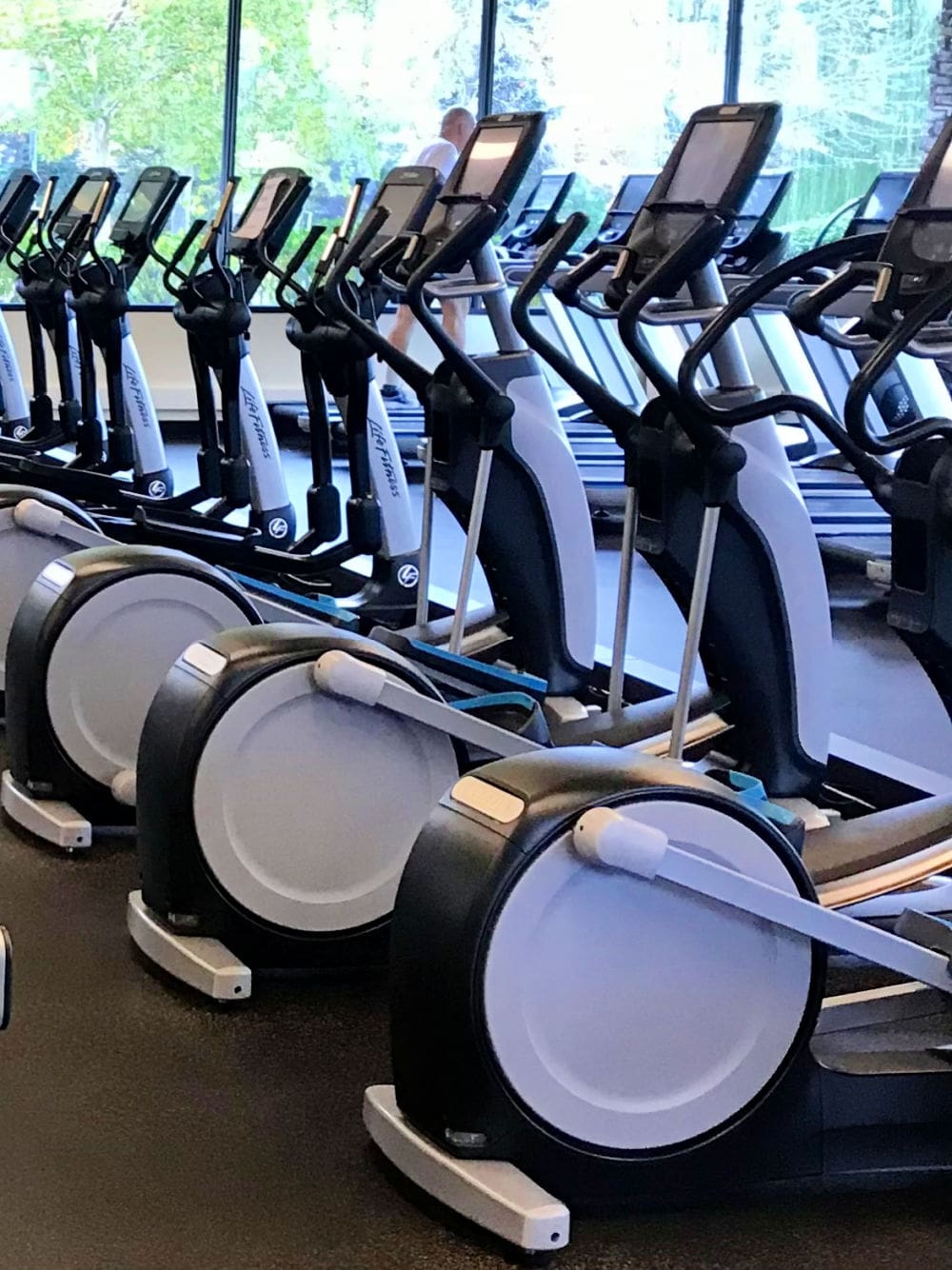
A full body workout can be an excellent way to increase your fitness level and develop strong muscle mass. A full body workout can provide many benefits. They are quick and easy to do, taking only about half an hours. You can achieve your fitness goals with a full-body workout that targets multiple muscle groups at the same time. This is one of the best ways to get a complete body workout. It can also improve your musculature balance and tensegrity.
Squats are great full body exercises for a wide range of different muscle groups. Squats focus on the back, shoulders, and core. Squats can be done at any time, even during lunch. All you need to do is pull your shoulders, butts, and hips back while keeping your thighs parallel to the floor. As you lower your body, make sure to support your feet with your heels.

Another great exercise for all ages is the burpee. It will target the entire body, with the legs hitting the ground particularly hard. It will also work on the core and upper bodies. It will get your heart rate going even when you're just sitting. The rower is a great choice for HIIT or low intensity steady sessions. Rowers can be used to strengthen the lower body as well as your overall strength. With a rower, you can do many different exercises.
Squats provide a great way to work your whole body and can be done anywhere. They are a great way of getting in shape, and to burn calories. They are also easy to do anywhere. These are not only great for your whole body, but they also make great warm up exercises. Any environment can be used to do a full body work out. Below are some of our favorite full body exercises. You should always do them safely to avoid injury.
The pull up is a great full-body exercise for beginners. It works every muscle and improves strength. It can be used to strengthen your whole body, including your legs. In addition, it will work the entire abs and burn fat as well. If you want to do a full-body workout, you can also do it at home. This is a great way to improve your fitness and build a well-rounded physique.

A great exercise for the whole body is one that targets multiple muscle groups. It also builds strength. Push-ups, squats and lunges are all possible. This will allow you to build strength and control over the ground. These exercises will help you lose fat and increase your muscle mass if you do them correctly. Strong core will be a benefit of the best total body exercise. This will help you tone your whole body and improve your mental as well as physical health.
FAQ
Are there 5 ways to have a healthy lifestyle?
A healthy lifestyle means eating right, being active, getting enough sleep, managing your stress levels, and having fun. You should avoid processed foods, sugar, or unhealthy fats. Exercise can help you burn calories and strengthen your muscles. Sleeping enough can improve memory and concentration. Stress management is a way to reduce anxiety levels and depression. Fun keeps us vibrant and young.
How can I live my best life everyday?
It is important to identify what makes you happy. Once you have a clear understanding of what makes you happy you can go backwards. You can also inquire about the lives of others.
You can also find books such as "How to Live Your Best Life" written by Dr. Wayne Dyer. He talks about finding happiness and fulfillment in all aspects of our lives.
How does weight change with age?
How do you know if your bodyweight changes?
Weight loss happens when there is less muscle mass and more fat. This means that daily calories should be less than daily energy. The most common cause of weight loss is decreased activity levels. You can also lose weight due to stress, illness, pregnancy, hormonal imbalances and certain medications. If there is more body fat than muscle mass, then weight gain can occur. It occurs when people eat more calories than what they use in a given day. Common reasons include overeating, increased physical activity, and hormonal changes.
Our bodies lose weight mainly because we eat less calories that we burn. When we exercise regularly, we increase our metabolism rate which burns off more calories throughout the day. This does not necessarily mean that we will get thinner. What is more important is whether or not our body is losing or gaining weight. Weight loss is possible if you burn more calories than you consume. But, if we consume far more calories than what we burn, then we actually store them as fat.
As we age, we become less agile and don't move as often. We also tend not to eat as much food as we used to when we were younger. Therefore, we tend to put on weight. We also tend to look larger because we have more muscle.
If you don't weigh yourself every week, it's impossible to determine how much weight has been lost. There are many options for measuring your weight. There are many ways to measure your weight. You can check your waist, hips, thighs, arms and legs. Some people prefer using bathroom scales and others prefer tape measure.
You can track your progress by weighing yourself at least once per week and measuring your waistline every month. You can also take pictures of yourself every few months to see how far you've come.
You can also check your height online to find out how many pounds you have. You'd likely weigh 180 pounds if you were 5'10 tall and 180 pounds if you were 180lbs.
What is the problem of BMI?
BMI stands for Body Mass Index. This is a measure of body fat that is calculated based on height or weight. The following formula can be used to calculate BMI.
Weight in kilograms divided by height in meters squared.
The score is expressed as a number between 0 and 25. Scores of 18.5 and higher indicate overweight, while scores of 23 and higher indicate obesity.
A person who is 100 kg in weight and 1.75m in height will have a 22 BMI.
How much should you weigh for your height and age BMI calculator and chart
A body mass index calculator (BMI) is the best way to find out how much weight you should lose. A healthy BMI range is between 18.5 and 24.9. Aim to lose 10 pounds per month if your goal is to lose weight. Simply enter your height, weight and desired BMI into the BMI calculator to calculate it.
Check out this BMI chart to determine if you are overweight or obese.
How to measure bodyfat?
A Body Fat Analyzer can be used to measure body fat. These devices are used to determine the percentage of bodyfat in people who desire to lose weight.
How often should you exercise?
Fitness is key to a healthy lifestyle. You don't have to exercise for a certain amount of time. It is important to find something that you enjoy and stay with it.
If you work out three times a week, then aim to complete 20-30 minutes of moderate intensity physical activity. Moderate intensity is when you still have to breathe hard after the workout. This type works out burns around 300 calories.
You can walk for 10 minutes every day if that is what you prefer. Walking is easy on the joints and has low impact.
If you'd rather run, try jogging for 15 minutes three times a week. Running is an excellent way to lose weight and tone your muscles.
You should start slowly if it's your first time exercising. Start with just 5 minutes of cardio a few times a week. Gradually increase duration until you achieve your goal.
Statistics
- Extra virgin olive oil may benefit heart health, as people who consume it have a lower risk for dying from heart attacks and strokes according to some evidence (57Trusted Source (healthline.com)
- This article received 11 testimonials and 86% of readers who voted found it helpful, earning it our reader-approved status. (wikihow.com)
- nutrients.[17]X Research sourceWhole grains to try include: 100% whole wheat pasta and bread, brown rice, whole grain oats, farro, millet, quinoa, and barley. (wikihow.com)
- According to the 2020 Dietary Guidelines for Americans, a balanced diet high in fruits and vegetables, lean protein, low-fat dairy and whole grains is needed for optimal energy. (mayoclinichealthsystem.org)
External Links
How To
What does the meaning of "vitamin?"
Vitamins are organic compounds naturally found in food. Vitamins allow us to absorb nutrients from food. Vitamins cannot come from the body so food must provide them.
There are two types of vitamins: water soluble and fat soluble. Water-soluble vitamins dissolve readily in water. Vitamin C,B1(thiamine), B2 (2riboflavin), and B3 (3niacin), as well as vitamin C,B1, B2 (riboflavin), and B3 (niacin), vitamin B6 (pyridoxine), vitamin folic acid (biotin), pantothenic, and choline are examples. Fat-soluble vitamins are stored in the liver, fatty tissue and kidneys. Examples include vitamin D, E, K, A, and beta carotene.
Vitamins are classified according their biological activity. There are eight major types of vitamins:
-
A – Essential for normal growth, and the maintenance of good health.
-
C - important for proper nerve function and energy production.
-
D - Vital for healthy bones and teeth
-
E is necessary for good vision, reproduction.
-
K - essential for healthy muscles, nerves, and bones.
-
P - Vital for strong bones and teeth.
-
Q - aids digestion and absorption of iron.
-
R - Red blood cells are made from red blood cells.
The recommended daily allowance for vitamins (RDA) varies based on gender, age, and physical conditions. The U.S. Food and Drug Administration has established the RDA values.
For example, the RDA for vitamin A is 400 micrograms per dayfor adults 19 years or older. Pregnant women require 600 micrograms daily to support fetal development. Children ages 1-8 require 900 micrograms per day. Infants below one year old require 700mg per day. But, between 9 months to 12 months, the amount drops to 500mg per day.
Children ages 1-18years who are obese need 800 micrograms per day while those who are overweight need 1000 micrograms per day and children who are underweight need 1200 micrograms per day to meet their nutritional needs.
Children aged 4-8 years old who have been diagnosed as having anemia require 2200 micrograms of vitamin C per day.
2000 micrograms is the minimum daily intake for adults over 50 years old to maintain good health. Because of their higher nutrient needs, women who are pregnant or nursing need 3000 mg per day.
Adults over 70 need 1500 micrograms daily, as they lose 10% of their muscle every ten years.
Women who are pregnant, nursing or breastfeeding need more than the RDA. Pregnant women require 4000 micrograms daily during pregnancy, and 2500 micrograms every day after birth. Breastfeeding mothers need 5000 mg per day when breastmilk is being produced.